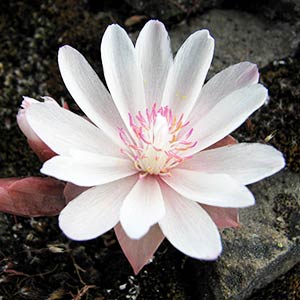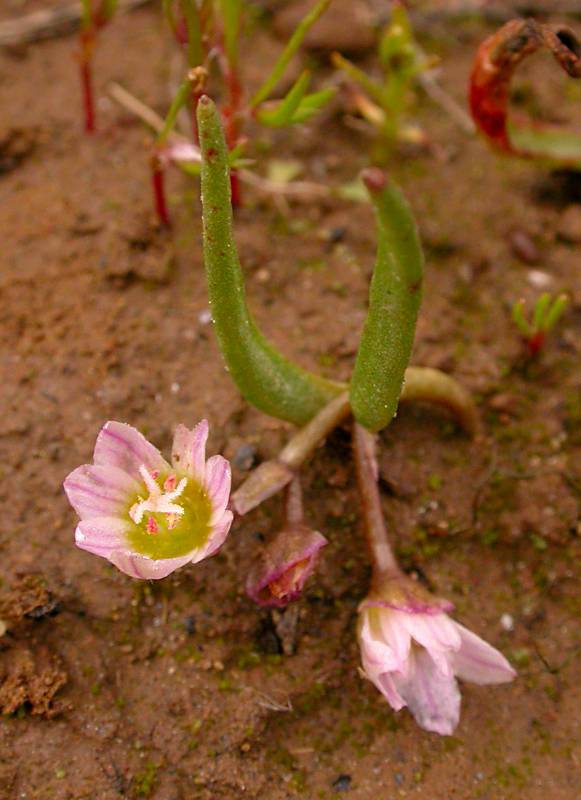Lewisia rediviva
Lewisia triphylla
bitterroot
three leaf bitterroot, three leaf lewisia
Basal leaves narrowly linear, up to 5 cm. long, lacking on flowering plants;
cauline leaves 2-3, whorled, attached just above ground level, linear, 1-4.5 cm. long.
Flowers 2-25 in a bracteate, simple or compound, panicle-like inflorescence, each flower often with bracts similar to the calyx and immediately subtending it;
pedicels 5-15 mm. long;
sepals 2, oval, rounded, 2-3 mm. long;
petals 5-9, white with pink venation or pinkish, 4-7 mm. long;
stamens usually 5;
style short, with 3-5 elongate stigmas.
Capsule about equal to the sepals.
Lewisia rediviva
Lewisia triphylla
Occurring east of the Cascades crest in Washington; southern British Columbia to California, east to Montana, Wyoming, Utah, Colorado, and Arizona.
Occurring chiefly east of the Cascades crest in Washington; Washington to California, east to Montana and south in the Rocky Mountains.
- Local floras:
BC,
CA,
OR,
WA
- Local Web sites:
CalFlora,
CalPhotos,
Flora NW,
PNW Herbaria,
Turner Photog.
WildflowerSearch
iNaturalist (observations)
USDA Plants Database
- LBJ Wildflower Center
- SEINet
- Plants of the World Online
- Encyclopedia of Life
- Wikipedia
- Google Image Search
- Local floras:
BC,
CA,
OR,
WA
- Local Web sites:
CalFlora,
CalPhotos,
Flora NW,
PNW Herbaria,
Turner Photog.
WildflowerSearch
iNaturalist (observations)
USDA Plants Database
- LBJ Wildflower Center
- SEINet
- Plants of the World Online
- Encyclopedia of Life
- Wikipedia
- Google Image Search



